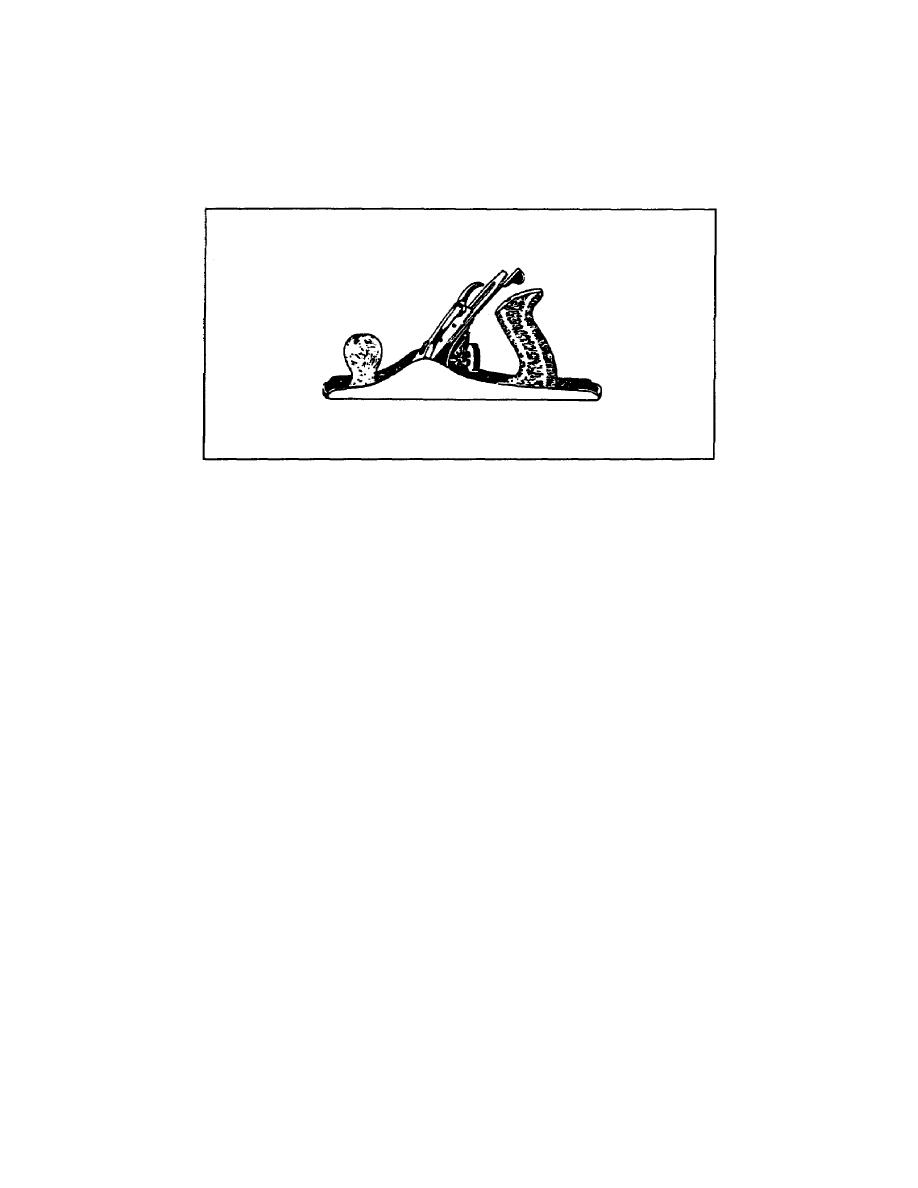
(4) Jointer Plane. This plane is the largest of the plane
family (Figure 228). It varies in length from 20 to 24 inches. The
great length of this plane makes it possible to smooth a large
surface or to make the edge of a board true so that two such surfaced
areas will fit closely together.
Figure 2-28.
Jointer plane
b. Care and Use.
(1) Sharpening Plane Bits. The length of the plane determines
the straightness of the cut. If you keep your plane bits sharp, they
will produce a true and smooth surface. To get the best service from
your planes, the bit should be ground and honed properly. When
grinding and honing plane bits, the same rules apply as for wood
chisels. The cutting edge should be straight on jointer,
smoothing, and blockplane bits and slightly curved on jackplane
bits.
(2) Using and Storing A Plane. Satisfactory results from a
plane depend on how it is used. On the forward stroke, hold the
plane flat on the surface to be planed. On the return stroke, lift
the back of the plane so that the cutting edge does not rub against
the blade. When the plane is not in use, place it on its side. For
storage, withdraw the blade into the body of the plane. This helps
keep the cutting edge sharp.
2-5. Rough Facing Tools. Rough facing tools are called striking
tools because the work is done by a series of strokes. The cut made
by this method is rough compared to cuts made by other tools.
a. Hand Axe. The hand axe has a curved cutting edge and a long,
flatfaced peen. It is sharpened with a bevel on each side of the
blade. The broad hatchet and half hatchet are sometimes referred to
as hand axes (Figure 229).
EN5155
2-14


 Previous Page
Previous Page
